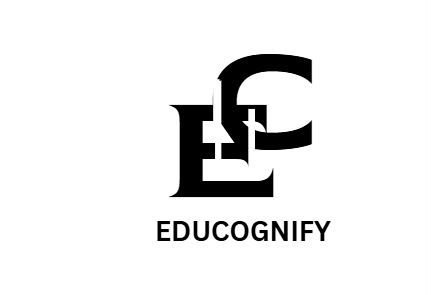
As your academic journey unfolds, you may come to recognize that memorizing facts alone no longer suffices for mastery of more advanced subjects. To excel in advanced coursework and real world applications, gaining a comprehensive knowledge base must replace mere memorization. Although challenging at times, building this deeper conceptual understanding requires long-term retention and practical application of information.7 Tips to Shift from Memorization to Conceptual Understanding
In this article, we’ll present seven effective strategies that can help you move beyond surface-level learning toward an in-depth grasp of key concepts, ultimately giving you more confidence and success with your studies.
7 Tips to Shift From Memorization to Conceptual Understanding
To stay competitive in today’s fast-paced learning environment, understanding concepts rather than memorizing facts is of vital importance. Switching from memorization to conceptual comprehension will significantly boost academic performance as well as real world problem-solving abilities. By exploring underlying principles and connections among ideas you’ll develop deeper and more flexible knowledge bases which you can apply across various situations.
Here we present seven effective strategies that can assist in moving you beyond mere memorization towards true comprehension of information. These techniques will not only increase retention but will also hone critical thinking abilities, invaluable tips whether you are studying hard in school or looking to hone professional cognitive abilities! These techniques offer key insight into optimizing the learning experience.
Focus on Big Ideas, Not the Details
In order to transition from memorization to conceptual understanding, it’s crucial that we grasp the broad principles. Instead of becoming bogged down with minute facts, focus on fundamental ideas which hold it all together, this approach helps you see beyond mere memory to gain deeper comprehension of subject material.
Start By Recognizing Key Themes. Begin your study of any field by identifying its key themes or core concepts, these serve as your basis of knowledge. Focusing on them first will establish an excellent basis upon which to add more specific details later.
Connect the Dots. Explore relationships among different concepts by understanding how various ideas relate to one another. Doing this will enable you to form an extensive mental model which is much more beneficial in applying your understanding to real-life situations than isolated facts alone.
Connect Individual Facts to Broader Concepts
In order to move away from memorization towards understanding, connecting individual facts with larger concepts is vital for moving away from rote memorization towards conceptual knowledge. Doing this helps grasp the big picture as you piece together various pieces of information related to each other.
Start by identifying overarching themes or principles within your subject area, then as you learn new facts consciously associate them to these broader concepts, this creates a mental framework which makes recalling information much simpler in multiple contexts.
Making mind maps or concept diagrams to represent relationships among facts and ideas visually may help reveal relationships that might otherwise remain hidden when studying isolated pieces of data alone. These visual aids may assist in seeing relationships which might otherwise remain concealed when studying only specific information pieces separately.
Apply your knowledge in real-life or hypothetical situations. Doing this forces you to think critically about how different facts and concepts interact, strengthening your comprehension while making information more memorable and impactful.
Utilize Visual Aids and Hands-On Learning
Integrating visuals and tactile experiences can significantly strengthen conceptual understanding. Diagrams, charts and infographics serve to transform abstract ideas into concrete forms more quickly, such as using color-coded mind maps to display relationships among historical events more succinctly than mere text can do.
Engaging learners directly in hands-on activities such as experiments or simulations allows for direct experience with subject material. Such interactive engagement engages multiple senses while strengthening neural connections for greater understanding. Building simple circuits helps illustrate electrical principles more intuitively than memorization alone can achieve.
By integrating visual and kinesthetic learning approaches, you can create an enhanced multidimensional learning experience for yourself or students in general. This multidimensional approach caters to various learning styles while making abstract concepts accessible and memorable for everyone involved.
Relate Abstract Concepts to Concrete Examples
Connecting abstract concepts with real-life scenarios can dramatically boost understanding and retention. By linking theory with practice, it will become much simpler for you to grasp complex ideas and their applications.
Look for ways to apply course material directly to everyday life, for instance if studying economics, consider how supply and demand affect grocery store experience, making abstract concepts more memorable! Doing this helps cement abstract knowledge.
Explore how professionals in your field of study apply theoretical knowledge. Case studies, industry reports and expert interviews provide invaluable insight into real world applications that deepen understanding while simultaneously equipping you for future career challenges.
Remember the goal is to create associations that resonate with you personally, by doing this you will turn dry facts into practical knowledge that sticks!
Increase Your Learning through Spaced Repetition and Retrieval Practice
Take full advantage of spaced repetition and retrieval practice techniques to enhance your learning. Spaced repetition involves reviewing information at gradually increasing intervals to help the brain form long-term connections over time; rather than studying all at once, make use of spaced out sessions so as to optimize long-term retention of information.
Retrieve information actively through retrieval practice, remembering information without consulting notes or textbooks, to strengthen neural pathways, making knowledge easier to access when needed. Try techniques such as Flashcards with increasing review intervals or self-quizzing on key concepts.
Explaining topics without reference materials. By employing these strategies, you’ll go from mere memorization to deeper comprehension of a material. Recalling information strengthens your grasp on it for greater understanding, leading to long-lasting knowledge retention.
Check for True Understanding, Not Just Memorization
As part of true comprehension, it’s crucial that students go beyond mere memorization to demonstrate true comprehension of concepts. You can do this by explaining ideas in your own words or applying them in novel situations; doing so reveals gaps in comprehension while reinforcing genuine learning.
Self-Assessment Techniques. Employ self-quizzing methods such as flashcards or practice problems and emphasize answering why answers are correct. Also engage in group conversations where concepts are articulated clearly while discussing questions are answered, all to identify areas needing further study.
Implementation and Analysis. Push yourself to apply newly gained knowledge to real world situations or hypothetical problems to cement understanding and develop critical thinking abilities. Furthermore, teaching someone else about it is an effective way of uncovering knowledge gaps or filling any gaps that exist in understanding a concept.
By employing these strategies consistently, you’ll move away from surface-level memorization toward deeper conceptual understanding, thus increasing both learning effectiveness and retention.
Address Misconceptions Directly
Misconceptions can pose major barriers to conceptual understanding. To combat them effectively, it’s crucial that misperceptions be identified and dealt with directly. A good starting point would be articulating existing beliefs regarding an issue as this can expose any inaccurate assumptions or misconceptions that might exist about that area of research.
Once misconceptions are identified, present evidence to disprove them using demonstrations, experiments or real world examples to illustrate why their beliefs are mistaken and generate cognitive dissonance among your students causing them to change their understanding and revisit old topics. This approach produces cognitive dissonance which encourages them to adjust their understanding.
Replace misperceptions with accurate concepts. Compare and contrast initial beliefs with new information, provide opportunities for dialogue and reflection, internalize correct concepts into your existing knowledge framework and integrate into it over time.
By directly addressing misconceptions, you open the way for greater and more accurate conceptual understanding.
Conclusion
By adopting these seven strategies, you can transform your learning approach from memorization to conceptual comprehension. Remember, however, that making such changes takes both practice and patience; yet their benefits will prove worthwhile as soon as they’re mastered; eventually you’ll find yourself more effectively remembering information, creating connections across subjects, and strengthening critical thinking abilities beyond classroom boundaries.
